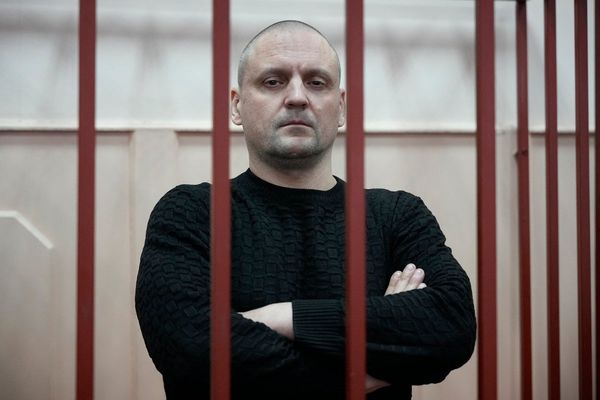
France ranks fifth globally in terms of its number of supercomputers – high-performance machines that can make millions, even billions, of calculations per second, and which are key to developing artificial intelligence. One of its most powerful, Jean-Zay, is dedicated to academic research.
It seems an unlikely location from which artificial intelligence will take over the world: a white-walled room about the size of a tennis court at the Paris-Saclay university in Orsay, south of Paris.
Half a dozen rows of server racks the height of refrigerators, each holding 26 motherboards, are connected by strands of turquoise cable.
This is the home of the Jean-Zay supercomputer.
Powerful calculations are happening here, all day, every day. At its peak, this supercomputer can do 126 petaflops – or 126 million billion calculations – per second.
A visit to the Jean-Zay supercomputer in the Spotlight on France podcast, listen here:

“There is this image of the supercomputer taking over the world, and so on. But you know, if you don’t know how to use a supercomputer, you actually can’t do much with it,” says Pierre-François Lavallé, director of IDRIS, the high-level computing institute of the French National Centre for Scientific Research (CNRS), which manages this and France's two other national supercomputers.
His job is to help researchers adapt their projects to the huge web of interconnected processors that make up Jean-Zay, named after a former French education minister.
Energy use
France is ramping up investment in computing power to support its ambition of being a global leader in AI, and Jean-Zay is one of three national supercomputers available to researchers to run their simulations or train their AI.
Because there is more demand than capacity, scientific committees decide who gets access.
Those who are chosen are able to use it free of charge, as long as they openly publish their research and data.
At any given moment, Jean-Zay is working on 1,000 scientific projects in fields as varied as medicine and road safety.
“At first it was mostly used for simulations, like climate evolution. Some projects are looking for new, efficient battery components or medications. During the pandemic, there were a lot of projects based on Covid,” explained Lavallé.
Today, after several upgrades to increase the supercomputer’s processing capacity, 60 percent of projects are concerned with AI.
Could European AI create a more unified European identity?
As its capacity has increased, so has Jean-Zay's energy use – although Lavallé says it has become more efficient.
“In the 16 years, from 2008 to now, the machine’s computing power went up 1,000-fold, while electricity consumption has gone up eightfold. So we consume eight times more energy than in 2008, but we go 1,000 times faster," he explained.
This efficiency is partly due to the use of GPUs – graphic processors – instead of central processing units, or CPUs. GPUs are not as versatile, but use less energy per computation.
But the system still uses a huge amount of energy, due to performing so many calculations in parallel. Jean-Zay uses around 20 gigawatt hours per year, which costs IDRIS between €3 million and €5m.
Recycling heat
These calculations generate heat, and if the system is not cooled, it will shut down within seconds so as not to melt down. To perform this cooling, small copper pipes filled with water run through the system.
“There is an extremely complex technical infrastructure behind all this, which looks more like plumbing than anything else,” said Lavallé.
Raphael Medeiros, who manages the supercomputer’s technical infrastructure, points to a massive heat exchanger, where the heat generated by the supercomputer – called “waste heat” – is transferred to the building’s heating system.
“The water enters the supercomputer at about 30 degrees, and when it comes it is at 36 degrees,” he explained. “This water goes out of the supercomputer to exchange the calories either with the Paris-Saclay heating system, or outside to cool off in the air if it is not possible to transfer the heat.”
AI boom to double data centre power use by 2030, IEA warns
During the winter this waste heat serves to warm campus buildings and nearby houses.
Some 6,500 megawatt hours are recuperated a year – enough to heat 1,500 houses.
During the summer, the heat is released outside, through evaporation, and a cooling system is used for very hot days during the summer.
In terms of carbon emissions, Lavallé points out that the system runs on the French electric grid, which is mostly fuelled by nuclear energy, a carbon-neutral energy source.
“We get our electricity from the electrical grid, and it’s true that we benefit from having low-carbon electricity in France, which is a real benefit compared to other European countries or even the United States or China,” he said.
However, the system is not green, by any means. And Medeiros points out that the main focus is computing power, to keep the supercomputer running night and day.
“We do need to keep the supercomputer running no matter what. Ultimately, it’s about doing science, and not about recuperating heat.”
Global talks seek to curb e-waste dumping as Africa bears the brunt
Visit the Jean-Zay supercomputer in the Spotlight on France podcast, episode 127, link here.







